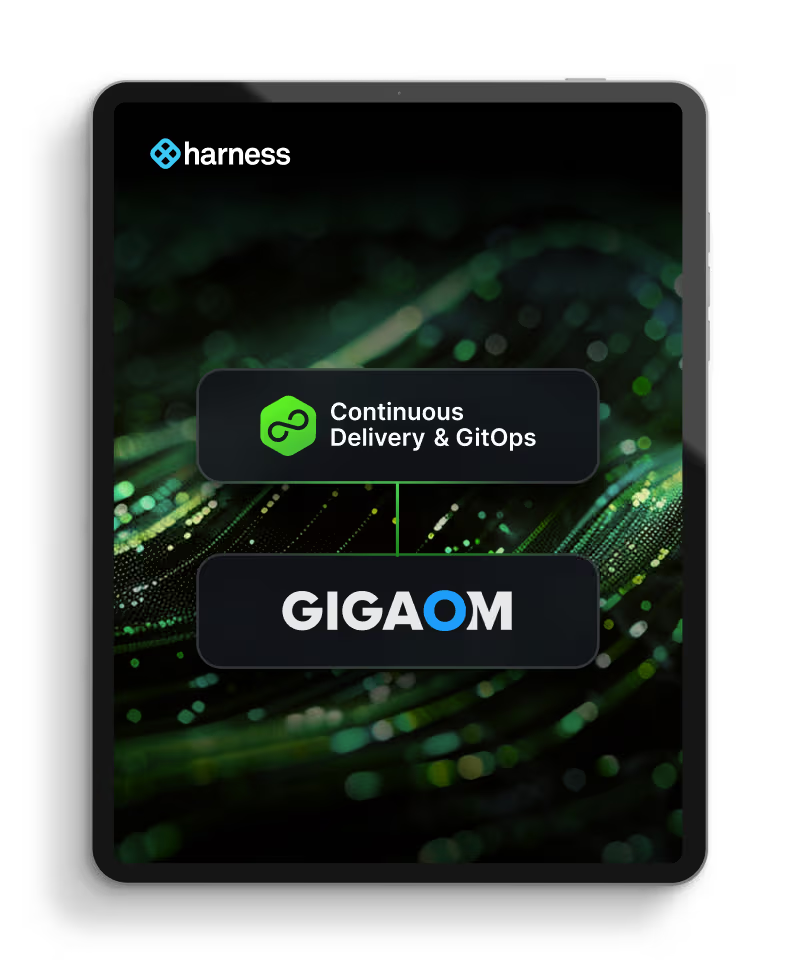
Harness CD
vs.
Jenkins
Jenkins vs Harness CD & GitOps
UPDATEd ON
18 Nov
2025
Build Speed
Harness accelerates builds with intelligent test selection, efficient caching, and access to our hyper-optimized build cloud.
Safe Deployments
Harness provides out of the box blue/green and canary deployments safeguarded by Continuous Verification (AI assisted deployment verification)
Governance Developers Love
Empower developers while ensuring compliance with Harness Policy-as-Code, Strong RBAC, and integrated security checks and gates.
How does
Jenkins
compare?
Jenkins is a widely recognized CI tool, that many use for deployments as well. While flexible, it’s plugin system can lead to incompatibilities and headaches. Harness, in contrast, is a comprehensive, commercial DevOps platform with built-in features to automate the worst parts of engineers’ day and elevate their best work. By accelerating builds and streamlining workflows, Harness helps teams of every size Get Ship Done.
Pipelines
Pipeline-as-Code
<yes><yes>
<with><with> Groovy-based
Visual Pipeline Editor
<yes><yes>
<no><no>
AI Guidance for Failure Remediation
<yes><yes>
<no><no>
Pipeline Templates
<yes><yes>
<with><with>
Pipeline Flexibility
<yes><yes>
<with><with>
Build Acceleration
Test Intelligence - Faster Builds Through Selective Test Execution
<yes><yes>
<no><no>
Test splitting
<yes><yes>
<no><no>
Caching software dependencies
<yes><yes>
<no><no>
Caching docker layers
<yes><yes>
<no><no>
Caching build tasks
<yes><yes>
<no><no>
Deployment Features
GitOps - ArgoCD and Flux
<yes><yes>
<no><no>
Centralized GitOps Reporting
<yes><yes>
<no><no>
Orchestrated Multi-Service Deploys
<yes><yes>
<no><no>
Continuous Verification ™
<yes><yes>
<no><no>
Canary & Blue\Green Deploys
<yes><yes>
<no><no>
Integrations / Platform Support
Any Source Code Manager
<yes><yes>
<yes><yes>
Containerized Pipelines
<yes><yes>
<no><no>
Containerized Plug-ins
<yes><yes>
<no><no>
Support for Mobile Builds
<yes><yes>
<with><with> Use Input steps
Deploys cloud-native apps
<yes><yes>
<yes><yes>
Deploys traditional apps
<yes><yes>
<yes><yes>
Deploys Infrastructure changes
<yes><yes>
<no><no>
Deploys database schemas
<yes><yes>
<no><no>
Security Scanner Integrations - SAST, SCA
<yes><yes>
<yes><yes>
Deduplication of Scanner Results
<yes><yes>
<no><no>
Automated Prioritization of Vulnerabilities
<yes><yes>
<no><no>
Automated AI Remediation for Security Issues
<yes><yes>
<no><no>
Governance & Reporting
Quality and Security Gates
<yes><yes>
<no><no>
Native Approvals
<yes><yes>
<with><with> Use Input steps
3rd Party Approvals (SNOW/Jira)
<yes><yes>
<with><with> Basic Integrations
Policy-as-Code (OPA)
<yes><yes>
<no><no>
SLSA L3 (v 1.0) - compliant build infrastructure
<yes><yes>
<no><no>

Harness is a leader in GitOps by GigaOm Radar Repor
Harness Named a Leader in the 2025 GigaOm Radar Report for GitOps
Detailed feature comparison
Pipeline-as-Code and Visual Pipeline Editor
Harness provides both a robust "Pipeline-as-Code" approach (YAML-based) and an intuitive visual editor, making it flexible for both code-centric and UI-focused users. Pipeline definitions can be managed in Git or stored in-platform. Jenkins offers a Groovy based as-code experience, but abandoned it’s effort to create a more visual experience (Blue Ocean).
AI-Driven Failure Remediation
Harness includes AI-based recommendations for failure remediation, helping users quickly address build and deployment issues. Logs are quickly analyzed and the AI suggests steps to remediate the broken pipelines. Jenkins does not have native AI capabilities.
Test Intelligence for Build Acceleration
Harness’s selective test execution significantly speeds up build times, making it ideal for large codebases where test suites can be a bottleneck. Jenkins users may need to configure and manage plugins to achieve similar test efficiencies, often with limited functionality.
Continuous Verification
Harness’s Continuous Verification feature automates monitoring and verification after deployments, providing rapid feedback on performance and stability. Jenkins lacks native support, relying on external monitoring tools that are disconnected from the CI/CD process, adding manual oversight.
GitOps Support
Harness offers a centralized view for GitOps, and tight integration with popular GitOps tools like Argo CD and Flux, allowing easier management and visibility of deployments. Jenkins doesn’t natively support GitOps, requiring substantial customization to implement a similar solution.
Containerized Pipelines and Plugins
Harness’s containerized pipelines and plugins simplify scaling, improve reliability, and reduce the risk of dependency conflicts. Jenkins can use containerization through Docker, but it requires significant setup and expertise to manage at scale.
Automated Security and Vulnerability Management
Harness natively integrates security scanning, deduplication, and vulnerability prioritization through its Security Testing Orchestration module, streamlining DevSecOps practices. Jenkins relies heavily on third-party plugins for security, which often lack comprehensive integration and consistency across environments.
Policy-as-Code (OPA) Support
Harness supports Policy-as-Code via OPA (Open Policy Agent), enabling automated compliance and governance. OPA policies can ensure that while developers are given permission to edit pipelines, they can not delete critical steps like a security check or required approval. Jenkins lacks out-of-the-box support for OPA, requiring custom scripting or plugins for policy enforcement, which can be challenging to maintain.
Orchestrated Multi-Service Deployments
Harness excels in orchestrating complex multi-service and microservices deployments, ensuring consistency across services. These deployments can be extended outside of traditional service tiers, by adding Infrastructure-as-Code and Database Schema migrations to integrated pipelines. Jenkins, being primarily a CI tool, requires extensive plugin and additional tools support to target various platforms, with uneven quality across those plugins. It does not have a strong orchestration layer to tie together multiple services sourced from different builds.
SLI/SLO Compliance (SLSA Level 3)
Harness meets SLSA Level 3 compliance standards for build integrity, supporting secure and traceable software delivery. Jenkins does not meet these standards natively, leaving organizations to manage additional security layers manually.


